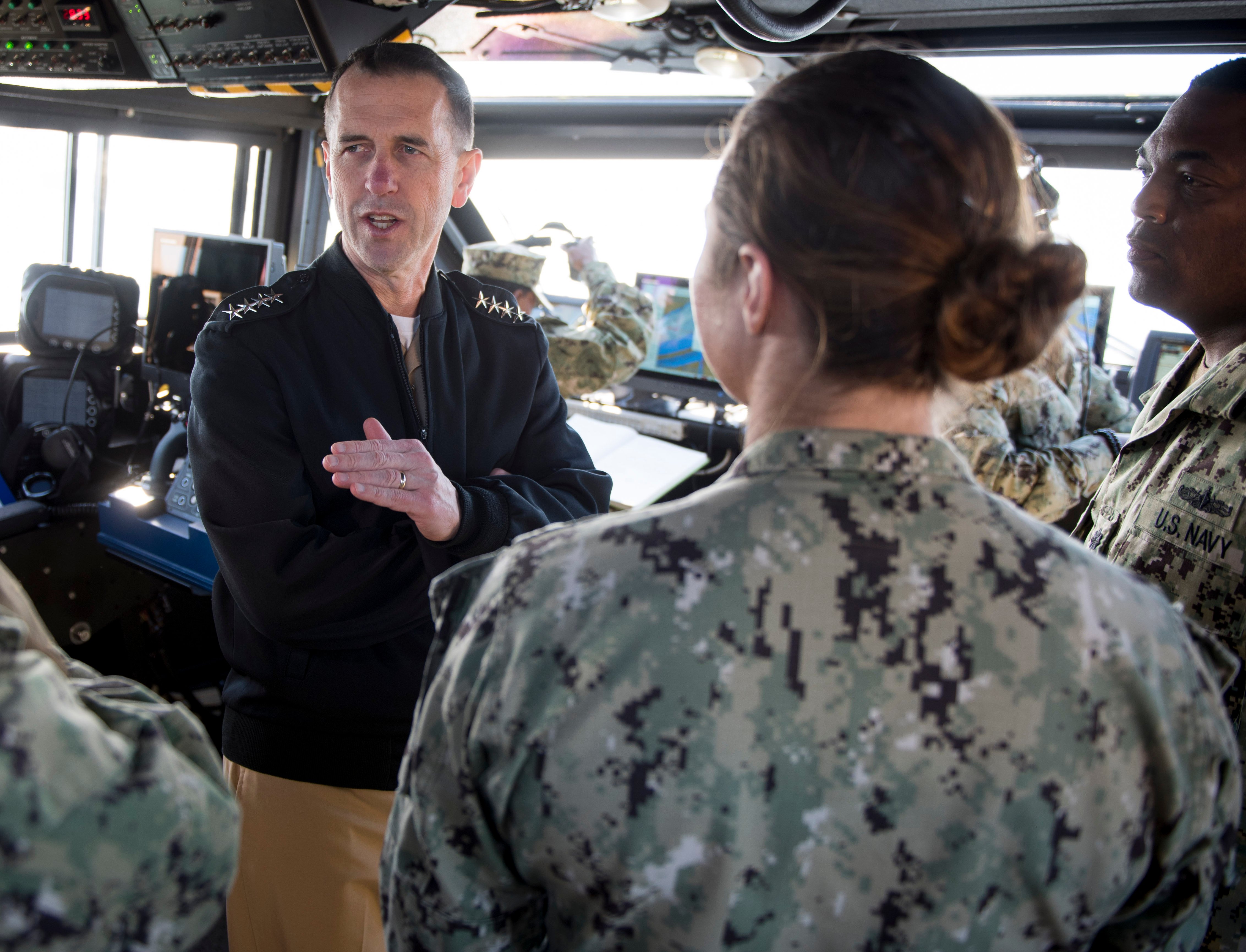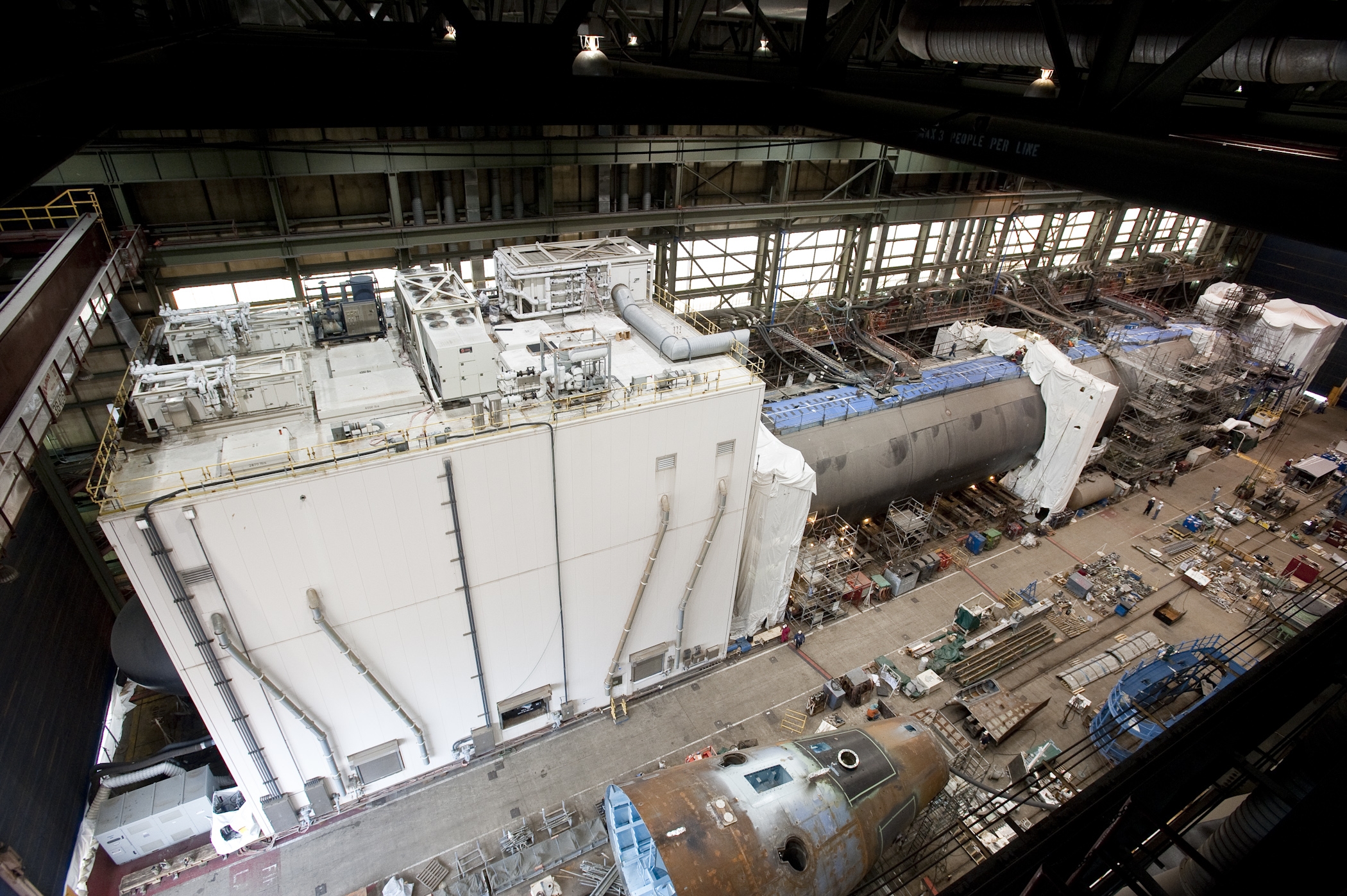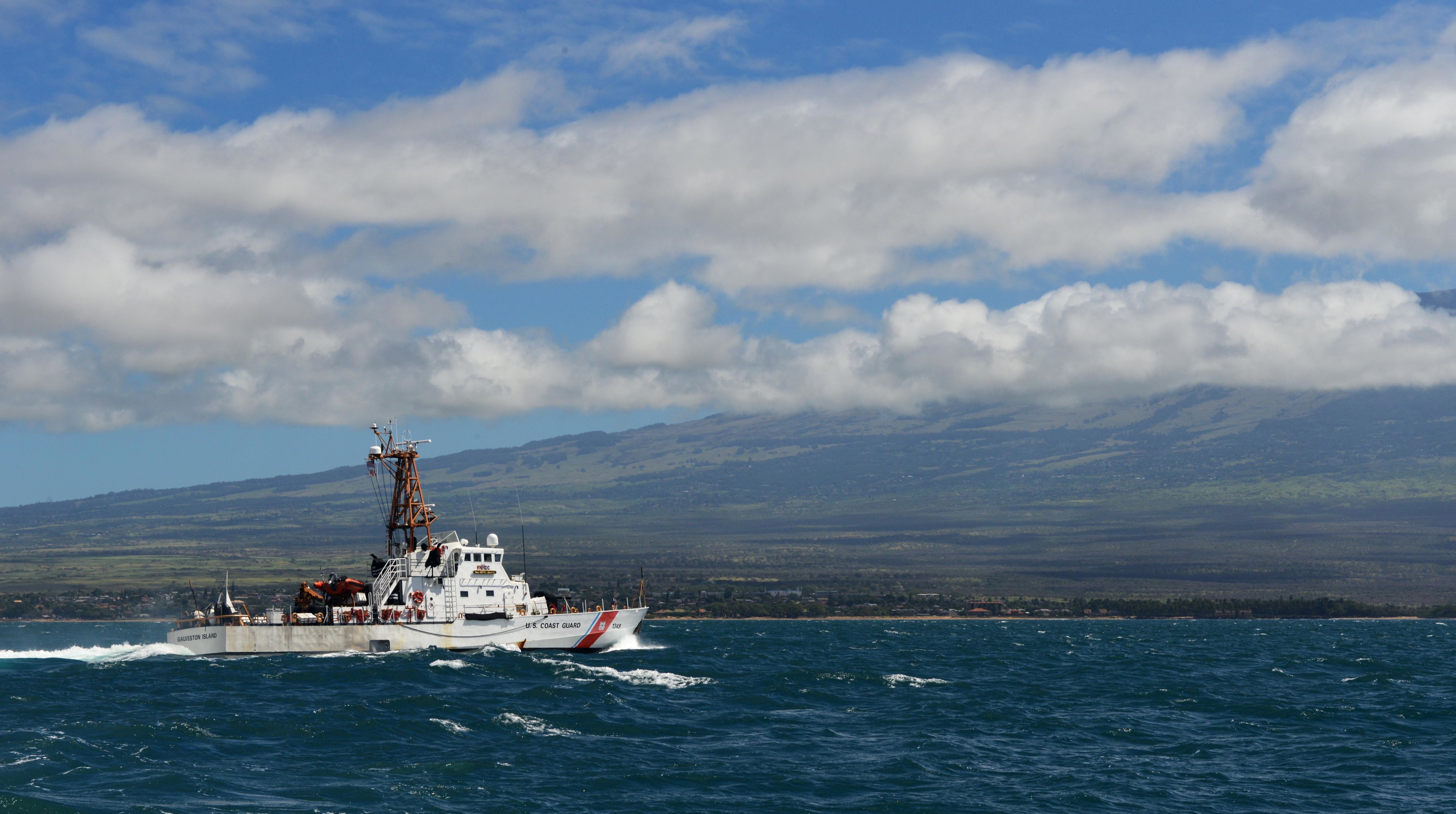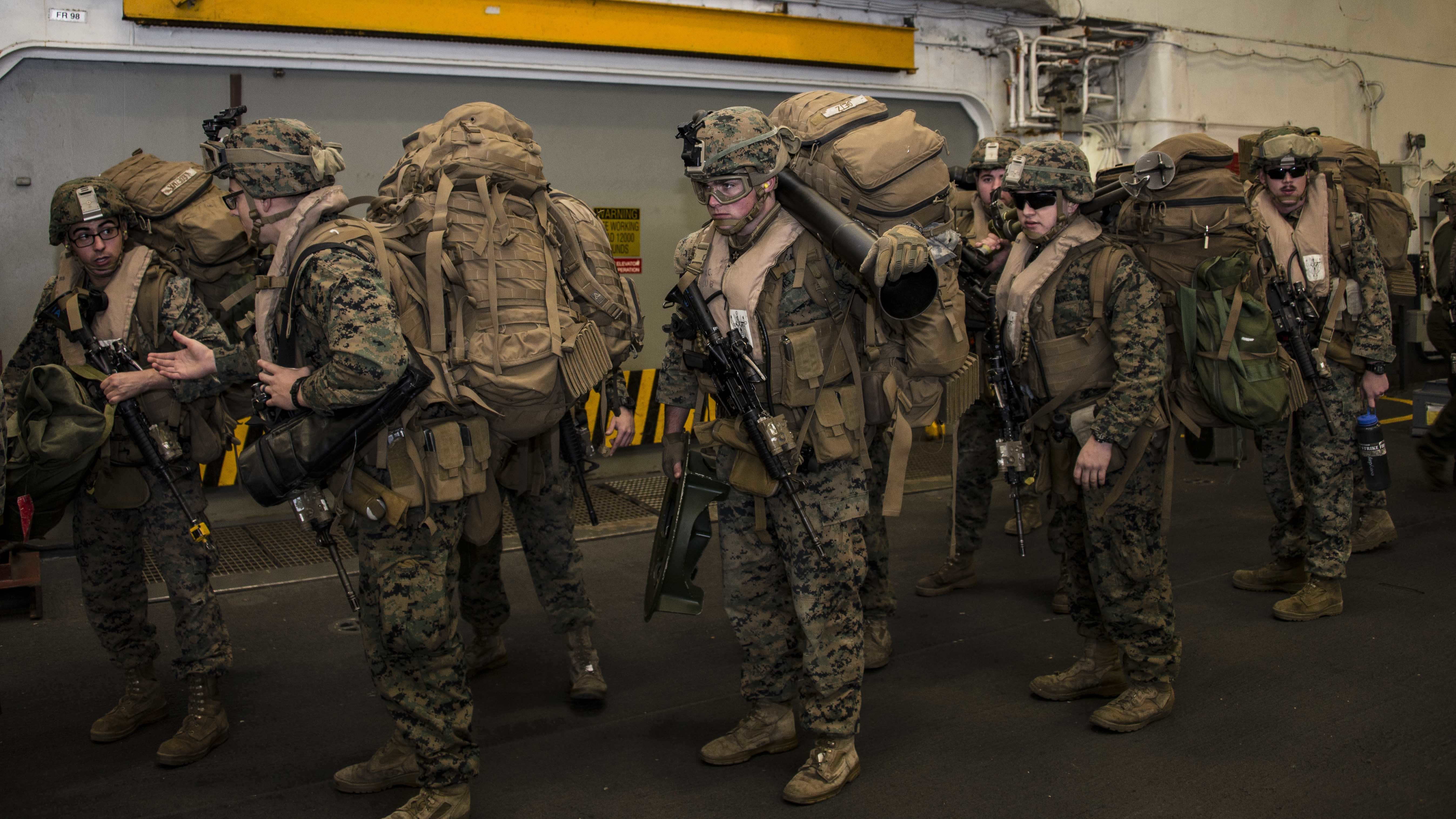
SAN DIEGO, Calif. — The upcoming Fiscal Year 2019 budget request will support Navy efforts to begin building a 355-ship fleet while also balancing capability upgrades and readiness, the chief of naval operations said on Thursday.
CNO Adm. John Richardson recently spoke of a six-pronged approach to creating naval power and what he has dubbed “the navy the nation needs.”
Asked by USNI News about how the FY 2019 budget request, set for release to Congress and the public on Monday, would reflect a balance of those six needs – capacity, capability, networks, sailor training, agile operations and readiness – Richardson said, “when that budget is delivered, one of the things that you can anticipate is that it will be informed by the strategic direction we are talking about, it will be consistent with the (six) dimensions of the navy the nation needs.”
Richardson said in a town hall discussion at the WEST 2018 conference, co-hosted by the U.S. Naval Institute and AFCEA, that the FY 2018 budget – which has still yet to be passed into law – “represents a pretty whole budget, particularly when it comes to funding those accounts that sometimes are not as visible but very important in terms of maintaining readiness. And so it funds readiness to really the maximum that is either required or executable. 2019 continues on that,” he said.
The 2019 budget will also be accompanied by a 30-year shipbuilding plan, unlike the 2018 budget. The Navy has been pushing for a 355-ship fleet since December 2016 but has put out relatively little public information on how it would achieve that goal. Lawmakers have been increasingly vocal in recent weeks about wanting the service to explain not just that it needs a larger fleet, but what that larger navy would do, and why it needs to contain a particular balance of ships.
Asked by USNI News if the 2016 studies were still relevant to answer those types of questions for lawmakers 14 months after their release, Richardson said they were.
“That’s a good starting point still, is my point. Let’s get building. First and foremost, let’s get building. We can argue whether 355 is the eventual right number, or is it 360, 370,” he said. The world continues to grow more complicated by the week, he said, “but in the near-term, we’re at 280 against a target of 355. Let’s get building.”
“The great consensus is that we need more naval power,” he continued.
“We can dive into several studies that justify that in different ways, but there’s a convergence there, so I think we’re on pretty solid ground.”
Richardson said the 30-year ship plan would include historical information on shipbuilding dating to 1955.

“The shipbuilding industrial base is now one-third the industrial base it was in 1955. There are 14 shipyards that build ships that have just shuttered or gotten out of the defense business. So you can see these two conflicting trends: the need to grow the number of ships, and you just don’t have the industrial base capacity to do it,” he said.
The ability to reach a 355-ship fleet is “very realistic, but I’ll tell you what, it’s going to be a matter of commitment in terms of resources. So we have sort of a family of plans: some sort status quo, it takes a long time to get to 355. If you want to get there faster, there’s the current limit of the current industrial base, and that can go so fast. And if you want to go faster than that, we’re going to have to build shipyards or think differently.”
Also at the town hall event were Commandant of the Marine Corps Gen. Robert Neller and Commandant of the Coast Guard. Adm. Paul Zukunft. They spoke of the prospects of a two-year budget deal in Congress that would provide higher toplines and greater funding stability and predictability.

“We are looking very optimistically at the deal that’s being cut that will fully fund an icebreaker, that will not just restore our infrastructure from a ravaging hurricane season but make it so it won’t fall down – build a house of bricks instead of straw, if you will, approach to the service. But making meaningful investments in a service that the sun never sets on,” Zukunft said. He noted that 40 percent of the Coast Guard’s capital ships bought, manned and maintained with Coast Guard dollars go to the Pentagon’s geographic combatant commanders around the globe, but 96-percent of the Coast Guard’s budget falls into the nondefense discretionary account, which was subject to even stricter spending caps than was the military’s budget since the 2011 Budget Control Act.
Zukunft said the service needed a predictable budget so that it could manage risk appropriately, and it needed a higher topline for medium- and heavy-icebreaker design and construction.
“We clearly need to build new icebreakers, and with the budget deal this will finally put real money to at least build the first one,” he said.
Neller said of the pending budget deal, “I’m hopeful that they’ll pass it. It’s a lot of money. It’s a lot of money. And we’re going to get that money like we did last year, with about half the fiscal year left to spend it, and that’s not any way to run a business. If they can do a multiyear [budget] without having to deal with the Budget Control Act, that will help us because then we can actually project and we can be more efficient.”
Neller said the force has been operating nonstop since 2001, with operational requirements growing for the maritime force.

“The gear’s gotten older, and we’re trying to recapitalize and maintain readiness and get ready for what we think might come and maintain our legacy equipment – and that takes money,” the general said.
Even as the budget deal’s higher topline would allow the Marine Corps to more easily balance its needs – paying salaries, buying new platforms like the F-35B Joint Strike Fighter and Joint Light Tactical Vehicle, improving infrastructure like hangars and housing, and more – he made clear the Marine Corps and its sister services needed to ensure they were being smart with every dollar they spend. To that end, he praised new Pentagon and Navy leadership for pushing the services to do just that.
“I find it quite refreshing to deal with [Deputy Defense Secretary Patrick] Shanahan and Ms. [Ellen] Lord at [under secretary of defense for acquisition, technology and logistics] and our own service secretary, Secretary [Richard V.] Spencer, because they take a very different view, they take a business view, and then they’re asking us some very hard questions: they’re asking really hard questions about, okay, what did you get out of that money, what value did you get out of that, how did you spend that money,” Neller said.
“It’s forcing us to be, in a positive way, more introspective and analytical about what we’re doing and the processes we’re using and how we spend this money so we can get a maximum benefit out of it.”





